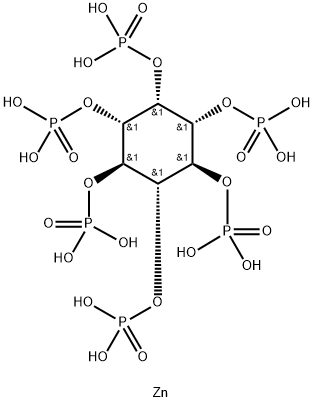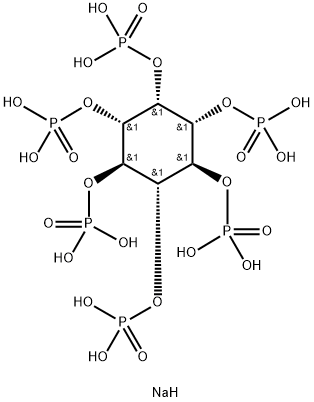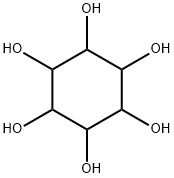Phytase
- CAS NO.:37288-11-2
- Molecular Weight: 0
- MDL number: MFCD00131910
- EINECS: 609-386-0
- Update Date: 2025-04-18 09:52:24
What is Phytase?
Description
Phytases are phosphatases able to hydrolyze O–P bonds in phytic acid liberating
inorganic phosphate. Phytases can be grouped according to the attack on the
hexaphosphoric ester into 3-phytase (myo-inositol-hexakisphosphate 3-phosphohydrolase,
EC 3.1.3.8) as well as 4-phytase (myo-inositol-hexakisphosphate 4-
phosphohydrolase, EC 3.1.3.26), releasing the phosphate at the corresponding
position at the inositol ring.
Phytic acid is used by plants to store different type of anions (Cu2+, Fe2+/3+,
Ca2+, Mg2+, etc.). The resulting salts are known as phytates. Nonruminant animals
do not have the enzymatic ability to hydrolyze phytates; therefore, phosphate and
minerals are not absorbed, but rather they pass through the intestinal tract undigested.
The addition of phytases to food and feed does therefore enhance the
availability of phosphate and minerals bound in phytates.
More than 20 years ago, the first commercial phytase product for feed, Natuphos,
was released. Nowadays, several other phytase products are available on
the market for the improvement of animal feed, such as Ronozyme from Novozymes
and Finase from AB Enzymes. The range of applications in nonruminant feed is large, as discussed in several reviews on the usage of phytases in the fodder
of pigs, poultry, and fish. Additionally, phytase might also be
used in food for the improvement of the nutritional value of cereal food products
by degrading phytate.
Commercial recombinant production of phytases occurs generally, if not
exclusively, in ascomycetes, whereas the phytase genes originate from
different phyla: bacteria, ascomycetes, and basidiomycetes (Peniophora lycii).
Industrial production takes place in liquid media in stirred bioreactors on a
6 9 120 m3 scale. In addition, the cultivation of phytase producing filamentous
fungi in solid-state or solid-substrate fermentation systems has also been
studied, but it lacks industrial adaptability. Another opportunity for the production
of phytases is the usage of transgenic plants, such as maize, rice, soybean, and
wheat.
Properties of Phytase
| Density | 1.33-1.42g/cm3 at 20℃ |
| storage temp. | −20°C |
Safety information for Phytase
Computed Descriptors for Phytase
Phytase manufacturer
New Products
4,4-Difluoropiperidine hydrochloride tert-butyl 9-methoxy-3-azaspiro[5.5]undecane-3-carboxylate Indole Methyl Resin N-Isopropylurea N,N-Dicyclohexylcarbodiimide(DCC) MELDRUMS ACID 5-METHYLISOXAZOLE-4-CARBOXYLIC ACID Magnessium Bis glycinate Zinc ascorbate 1-bromo-2-butyne 2-acetamidophenol 9(10H)-anthracenone Erythrosin B, 4-Piperidinopiperidine 2-((4-morpholinophenylamino) (methylthio) methylene) malononitrile 2,4-dihydroxybenzaldehyde 3-(4-morpholinophenylamino)-5-amino-1H-pyrazole-4-carbonitrile Methyl 2-methylquinoline-6-carboxylate 2,6-dichloro-4-nitropyridine 4-Bromo-2-chlorobenzonitrile 2-(benzylamino)acetic acid hydrochloride 4-(tert-Butoxycarbonylamino)but- 2-ynoic acid 3,4-dihydro-2H-benzo[b][1,4]dioxepine 1-Phenyl-1-cycloprppanecarboxylicacidRelated products of tetrahydrofuran








You may like
-
 37288-11-2 Phytase 98%View Details
37288-11-2 Phytase 98%View Details
37288-11-2 -
 3-(4-amino-1-oxoisoindolin-2-yl)-1-methylpiperidine-2,6-dione 98%View Details
3-(4-amino-1-oxoisoindolin-2-yl)-1-methylpiperidine-2,6-dione 98%View Details -
 614-19-7 98%View Details
614-19-7 98%View Details
614-19-7 -
 3112-85-4 Methyl phenyl sulfone 98%View Details
3112-85-4 Methyl phenyl sulfone 98%View Details
3112-85-4 -
 20677-73-0 (2,2-diethoxyethyl)methylamine 98%View Details
20677-73-0 (2,2-diethoxyethyl)methylamine 98%View Details
20677-73-0 -
 3-(4-(hydroxyamino)-1-oxoisoindolin-2-yl)piperidine-2,6-dione 98%View Details
3-(4-(hydroxyamino)-1-oxoisoindolin-2-yl)piperidine-2,6-dione 98%View Details -
 57381-49-4 2-bromo-4-chlorobenzonitrile 98%View Details
57381-49-4 2-bromo-4-chlorobenzonitrile 98%View Details
57381-49-4 -
 4,6-dichloropyrimidine-5-carbaldehyde 98%View Details
4,6-dichloropyrimidine-5-carbaldehyde 98%View Details
5305-40-8
